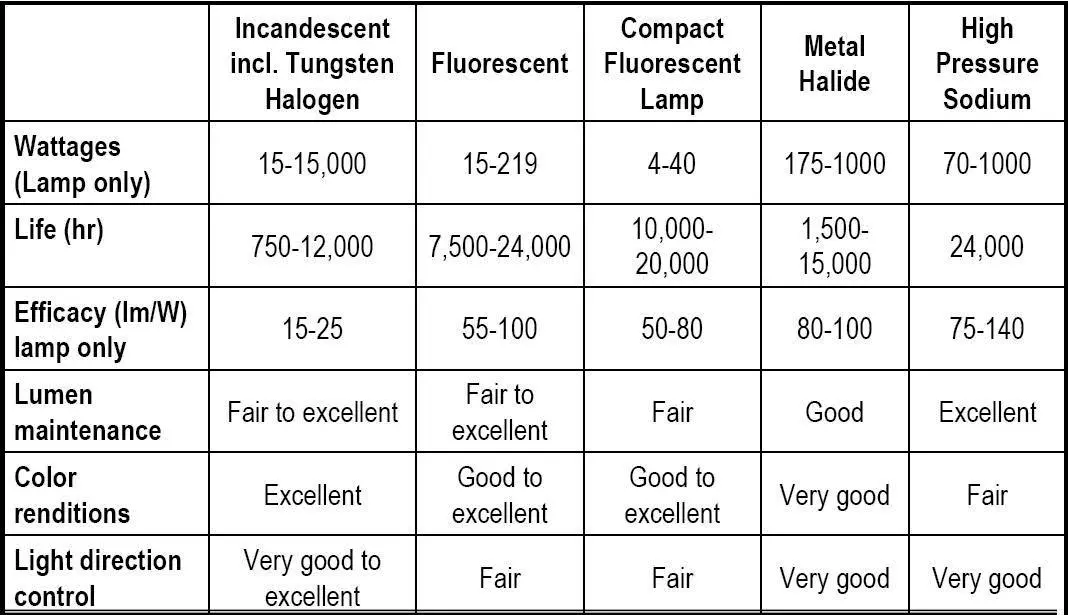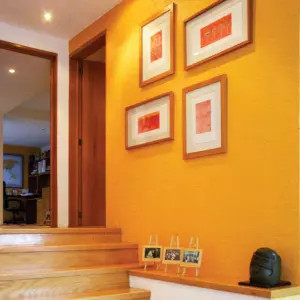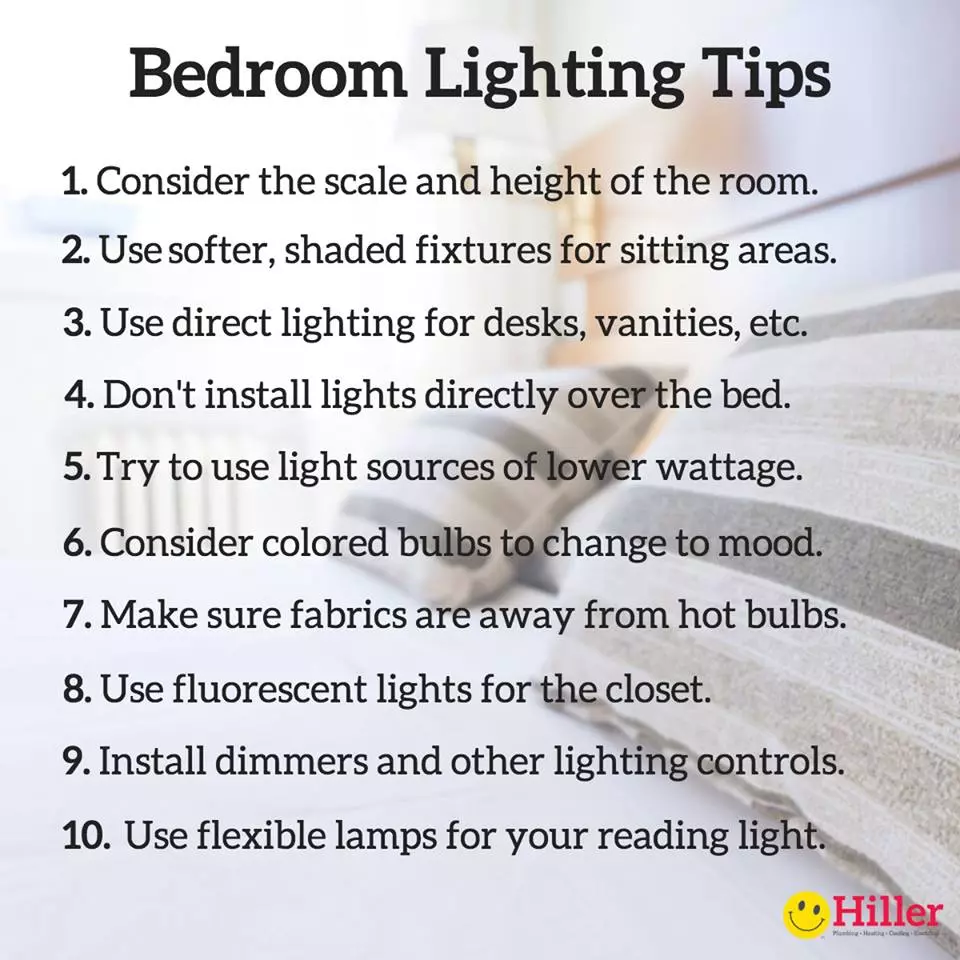Posted on June 1, 2017
Lighting is a crucial aspect of our homes and businesses, impacting both the aesthetics and functionality of a space. However, it goes beyond that - it can profoundly affect our mood, emotions, and overall well-being. As we approach the darker days of fall and winter, it becomes even more important to understand the significance of indoor lighting.
How can you transform the lighting in your home to create a happier and more productive environment? Thankfully, scientific research on the effects of light can guide your interior lighting design. Rather than undergoing a complete remodel, a few adjustments to your lighting scheme may be all that is needed.
Psychological and Physiological Effects of Light
- Bright light intensifies emotions, both positive and negative.
- Excessive light at night, including electronic media, can disrupt sleep and worsen sleeping disorders. Installing lux on your electronic devices can help combat the negative effects of blue light.
- Natural light (daylighting) improves the health, happiness, and productivity of students and workers. It also reduces utility costs and enhances the well-being of building occupants.
In a study that altered the color and intensity of lighting in a schoolroom, children were observed to be less fidgety and more well-behaved. The electromagnetic energy that emits from light affects the brain's neurotransmitters, which carry messages between nerves and muscles.
Studies conducted on animals, such as rats, have shown that light influences melatonin, a hormone that regulates serotonin levels in the body. Serotonin plays a crucial role in mood, behavior, appetite, sleep, memory, and desire.
Whether you desire a good night's sleep or aspire to improve your relationships and productivity at home, making changes to your interior lighting may hold the solution.
Lighting is both an art and a science. To implement an effective lighting strategy for your home, it is crucial to consult with professionals who possess expertise in electrical systems and lighting design. Apart from technical knowledge, these professionals consider mood, aesthetics, safety, and enjoyment when installing lighting fixtures.
Lighting Design Factors:
- Size and space
- Occupant's age and preference
- Ceiling height and shape
- Color of walls and furniture
- Existing lights and electrical setups
- Points of interest, artwork, and highlight areas
- Traffic patterns
- Shadows and reflections
- Daylight integration
- Surface characteristics
- Color appearance
- Lighting controls and distribution
- Source, task, and eye geometry
- Economics and energy efficiency
- Spatial perceptions
- Level of illumination (lux)
- Psychological and physiological factors
- Electrical codes, documentation, and specifications
While we can provide general guidelines for lighting different rooms in your home, it is important to remember that every home is unique and requires specialized attention. Use this guide as a starting point and consider seeking professional advice to achieve your desired lighting scheme.
Color also plays a significant role in shaping our psychological and physiological states. The combination of room colors and the color temperature of your lighting can make a considerable difference in how you feel.
Lighting Design Layers
Lighting designers usually consider three main lighting categories:
1. General or Ambient Lighting
General or ambient lighting provides overall illumination to make an interior space visible. It is often referred to as natural light or existing light. In addition to natural light, general/ambient light is typically provided by normal room lights.
2. Task Lighting
Task lighting is directed towards specific areas to provide detailed visibility and ensure safe performance of tasks. It is recommended for close-range activities such as cooking, sewing, drawing, and writing.
3. Accent Lighting
Accent lighting is used to highlight specific features, creating visual interest and changing the mood of a room.
Lighting Fixture Types
To simplify your lighting design process, it can be helpful to categorize lighting fixtures into main groups:
1. Surface Lights
Surface-mounted fixtures are visible and flush against the ceiling or wall. They are commonly used in entryways, hallways, and bedrooms.
2. Pendant Lights
Pendant fixtures hang from the ceiling by a cord, cable, or chain. They are often found in dining rooms and kitchens, particularly in homes with higher ceilings.
3. Recessed Lights
Recessed lighting is concealed, typically in a ceiling cavity, to create a clean and glare-free look. This indirect lighting can be used effectively in any room.
4. Track Lights
Track lighting offers flexibility and versatility, with multiple bulbs on a track, providing various lighting options. The fixtures can be suspended from the ceiling or surface-mounted, offering a wide variety of finishes, colors, and styles.
5. Portable Lights
Portable lights are movable and can be plugged into an electrical outlet or operated with batteries. They are often used on desks and bedside tables, providing flexibility in lighting solutions. Floor lamps can also be added to achieve the desired look and functionality.
6. Landscape Lighting
While this guide focuses on indoor lighting, it's important to note that landscape lighting requires its own set of considerations. Outdoor lighting encompasses various types such as bullet lights, flood lights, motion sensors, deck lighting, security lighting, and more. For outdoor lighting installation, maintenance, and repair, consult a professional.
Light Bulb Types
Choosing the right light bulb for each lighting fixture is essential. Consider the following guidelines:
- Dimmable CFLs and LEDs are energy-efficient replacements for incandescent lights.
- Avoid using CFLs with motion sensor devices.
- Select light fixtures designed for LED and CFL bulbs to maximize energy savings.
- The diagram below illustrates different types of light bulbs and lamps:

Source: electrical-knowhow.com
Color Temperature
The color temperature of light refers to its color appearance. It can be categorized into three main groups measured in Kelvin (K):
- Warm
- Neutral
- Cool
When choosing light bulbs, consider the color temperature based on your needs:
- Warm Light (2700K - 3000K): Conveys a warm and cozy atmosphere, ideal for bedrooms and living rooms.
- Neutral Light (3500K - 4100K): Provides white light suitable for areas that require energy and focus, such as kitchens and bathrooms.
- Cool Light (5000K - 6500K): Delivers a bright, bluish-white light similar to noon on a sunny day. Cool light is great for activities that require attention to detail, such as reading, working, and hobbies.
The following images show the color temperature options:


Source: donanimhaber.com
Consider the impact of color temperature on the mood and ambiance of a space. Choose the appropriate color temperature for each room based on its purpose and the desired atmosphere.
Room-by-Room Interior Lighting Guide
Lighting requirements vary from room to room, depending on the intended use of the space. Here are some guidelines for different areas of your home:
Entryways
Well-lit entryways create a warm and welcoming atmosphere for family members and guests. Use ceiling fixtures to provide ambient lighting and ensure safe passage. Consider the following tips:
- Avoid potlights/downlights that may create high-contrast shadows.
- Use accent lighting to highlight artwork.
- Install track lighting for a wall wash effect.
- Add a pendant light near the door to create an inviting area.
- Place switches in easily accessible locations.
- Opt for energy-efficient LED and CFL lights due to their extended usage.
Stairs and Hallways
Well-lit stairs and hallways enhance safety and ease of movement. Install fixtures every 4-6 feet to light up the area effectively, define its shape, and highlight artwork and textures. Utilize various light sources such as wall lights and wash lights, depending on the room's size and spacing of fixtures.
Utility Rooms and Garages
Utility rooms, such as laundry and workspaces, require ample ambient and task lighting. Task lighting can be achieved through a combination of track lighting and pendant fixtures for higher illumination. Add color and illumination to enhance focus during sorting, mending, and fixing tasks. Consider the following suggestions:
- Avoid potlights/downlights that create shadows.
- Install moisture-proof fluorescent fixtures for even light distribution.
- Ensure lights are not directly overhead your vehicles.
- Use task lighting for work areas, appliances, and tables.
Bathrooms
Bathrooms require lighting that prioritizes safety, functionality, and aesthetics. Bright and shadow-free lighting is essential. Consider these tips:
- Use pendants or wall sconces above mirrors and sinks.
- Direct strong, neutral/cool light towards your face when standing in front of the mirror.
- Add a small LED light to GFCI outlets for emergency lighting at night.
- Consider dimmable lighting over the head area if you have a bathtub.
- Separate light switches from fan switches.
Kitchens
Kitchens serve various purposes beyond cooking and have become central gathering spaces in many homes. Create a well-lit environment with a combination of ambient and task lighting. Consider the following suggestions:
- Use undercabinet lighting to illuminate countertops.
- Opt for energy-efficient light bulbs like LEDs due to extended usage.
- Incorporate multiple lighting layers with separate controls.
- Utilize wall washing techniques to highlight bookshelves and artwork.
- Install pendant lights or chandeliers above kitchen islands or breakfast nooks.
- Implement dimmers for adjustable lighting levels.
Dining Room
Dining rooms should feature captivating light fixtures as the room's focal point. Consider the following tips:
- Install a chandelier or pendant light above the dining table.
- Use wall sconces to highlight decorative cabinets, sideboards, or buffets.
- Use track lighting or recessed lighting to create ambient light.
- Highlight prized possessions with recessed and wall lighting.
- Install undercabinet lights to showcase fine china and silverware.
Living Rooms
Living rooms demand a lighting scheme that accommodates various activities. Create multiple lighting layers with flexible options. Consider the following suggestions:
- Utilize portable lighting for flexibility and control.
- Use wall washing techniques to highlight bookshelves and artwork.
- Avoid glare on TV screens by positioning lights appropriately.
- Combine downlights, accent lights, and portable lights for intimacy and interest.
Offices
With the rise of remote work, home offices have gained importance. Effective lighting is crucial for productivity and focus. Consider the following tips:
- Minimize glare, especially on computer screens.
- Use direct and indirect lighting for bright, low-glare illumination.
- Opt for energy-efficient light bulbs.
- Cooler light colors (3000K - 5000K) are ideal for home offices.
Also, consider the impact of natural light on productivity levels. Choose an office space with windows to benefit from increased health, happiness, and productivity.
Bedroom Lighting
The bedroom is a sanctuary that requires careful attention to lighting. Factors such as the room's size and scale should be considered. Follow these tips for a well-lit and relaxing bedroom:
- Install recessed lighting with dimmer controls above the head of the bed.
- Avoid placing lights directly over the bed.
- Utilize undercabinet or accent lighting for highlighting artwork and details.
- Incorporate dimmers and lighting controls for flexibility.
- Choose light bulbs of lower wattage for a soothing atmosphere.
- Consider using colored bulbs to set the desired mood.
- Pay attention to fabric proximity to hot bulbs.
- Use fluorescent lights for closets.

General Interior Lighting Tips
Consider these additional tips for enhancing your home's lighting:
- Install dimming controls for reduced electricity usage and flexible lighting options.
- Utilize lighter colors and reflective surfaces to achieve the desired atmosphere.
- Be cautious with colored light bulbs, using them sparingly to avoid overwhelming the space.
- Adjust lighting levels based on the amount of natural light the room receives.
- Low light levels promote relaxation, while brighter lights enhance focus and activity.
- Replace incandescent lights with energy-efficient LEDs and CFLs to save money.
- Seek professional advice on wattage and lighting combinations specific to your space.
What Sets Hiller Apart?
- Expertise and Quality: We provide ongoing training to our electricians, ensuring the use of high-quality products and superior workmanship.
- Peace of Mind: Our complete satisfaction guarantee, unmatched warranties, and extensive rebate options offer unparalleled peace of mind.
- Availability: Our award-winning service is available 24/7, including holidays.
- Speed: We complete all projects effectively and efficiently, minimizing disruptions to your routine.
Hiller Plumbing, Heating & Cooling offers comprehensive electrical services, including indoor and outdoor lighting. If you're interested in improving your home's interior lighting, contact us, and we'll send a professional lighting architect to assist you.









